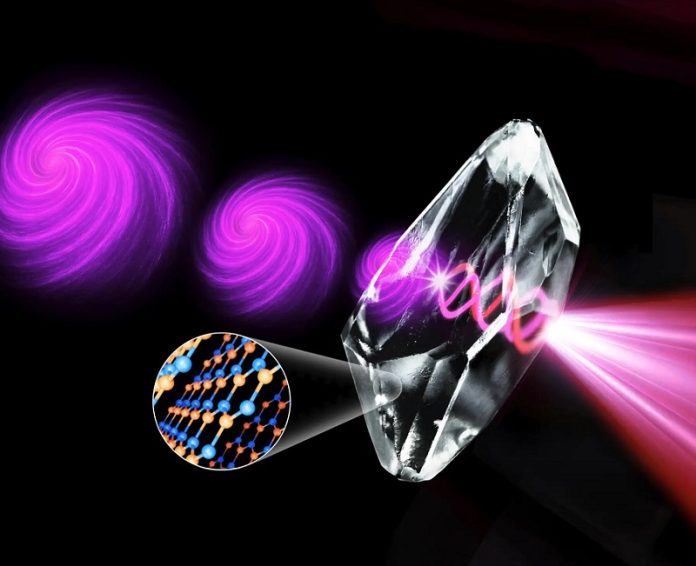
Imagine watching a whirlpool in a river or a tornado in the sky.
These spirals don’t just spin in place—they move forward while keeping their swirling motion intact. Now, imagine a beam of light behaving in the same way.
This type of “twisted” light, called an optical vortex, is no ordinary beam.
Because it spirals as it moves, it can carry much more information than regular light, making it a promising tool for faster internet speeds and ultra-secure communications.
Until now, generating optical vortices has required bulky crystals or expensive, complicated equipment. But researchers have discovered a much simpler way to create them—using ultra-thin, low-cost materials known as van der Waals (vdW) materials.
These are special layered crystals held together by weak intermolecular forces, the same kind of forces that let a gecko stick to a wall. The weak bonds mean the layers can easily be peeled apart and reconfigured, giving scientists an easy way to manipulate light.
The research, published in Light: Science & Applications, shows that when circularly polarized light—where all the photons spin in the same direction—passes through these vdW materials, something remarkable happens.
The spin of the light flips, and it begins to twist, transforming into an optical vortex.
This twisting effect occurs because the materials slow down different parts of the light in different ways, a property called birefringence. It’s like light entering a funhouse mirror—different sections are stretched or bent unevenly, creating a spiral, doughnut-shaped beam on the other side.
The team demonstrated the effect using two well-known vdW materials: hexagonal boron nitride (hBN) and molybdenum disulfide (MoS₂). Even when using layers thinner than a human hair—just 8 micrometers thick for hBN and 320 nanometers for MoS₂—the materials successfully produced clean, well-defined optical vortex beams.
Not only does this method work at incredibly small scales, it’s also efficient. Nearly half of the incoming light was converted into twisted beams, and computer models suggest that efficiency could be pushed even higher with further refinement.
Why does this matter? Optical vortices open up a whole new way to transmit data. Their spiraling shape provides an extra channel for encoding information, like adding extra lanes to a digital highway. More lanes mean more data can travel at once, paving the way for faster internet, stronger satellite communications, and highly secure data transfer.
The next steps for researchers are to improve the efficiency, ensure compatibility with existing communication technologies, and integrate this method into larger optical systems. If successful, this breakthrough could transform how information travels across the globe—and even into space.
Source: University of Melbourne.



